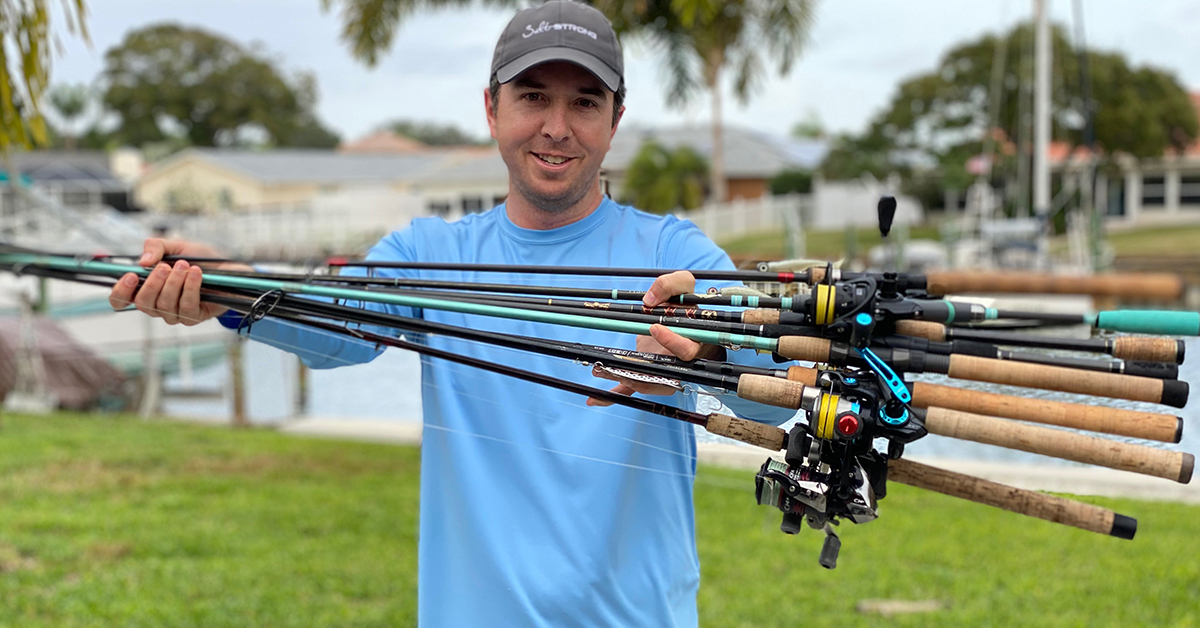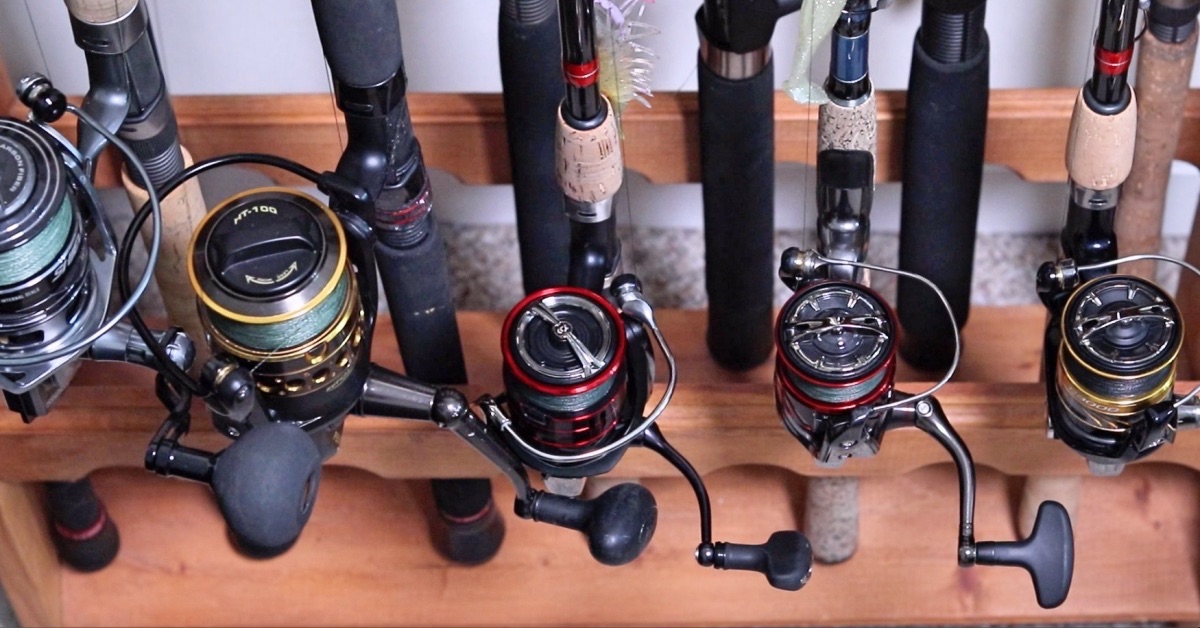Fishing is a popular activity that attracts millions of people around the world. Whether you are an experienced angler or just starting out, choosing the right gear is essential for a successful fishing trip. One of the most important questions asked by anglers is, “What size rod and reel for inshore fishing?” The answer to this question depends on several factors such as the type of fish you are targeting, the depth of the water, and the fishing location. In this article, we will explore the best rod and reel size for inshore fishing so that you can have a memorable and successful fishing experience.
Inshore fishing is a thrilling and exciting activity that requires the right gear to catch fish. With so many options available in the market, choosing the right size rod and reel can be overwhelming. However, understanding the basics of inshore fishing and the type of fish you are targeting can help you make an informed decision. Whether you are fishing for redfish, trout, snook, or flounder, having the right size rod and reel can make a huge difference in the success of your fishing trip. So, let’s dive into the world of inshore fishing and find the perfect rod and reel size for you!
When it comes to inshore fishing, a medium-action rod with a length of 7 to 8 feet and a spinning reel sized between 3000-4000 is the most suitable. This setup allows for a balanced combination of sensitivity, power, and casting distance. However, the best size of the rod and reel also depends on the type of fish you’re targeting and the fishing technique you plan to use.

What Size Rod and Reel for Inshore Fishing?
Inshore fishing is one of the most popular forms of fishing, especially among beginners. It involves fishing in shallow waters, usually near the shore or in estuaries, and targeting fish species such as redfish, trout, snook, and flounder. Choosing the right size rod and reel for inshore fishing is crucial to ensure a successful and enjoyable fishing experience. In this article, we will discuss the factors that affect the size of the rod and reel, and provide recommendations for different types of inshore fishing.
Factors that Affect the Size of the Rod and Reel
Several factors should be considered when choosing the size of the rod and reel for inshore fishing. The primary factor is the size of the fish you intend to catch. In general, larger fish require a heavier rod and reel, while smaller fish can be caught with a lighter setup. The type of bait or lure you plan to use is also a factor. Heavier lures require a stiffer rod, while lighter lures can be used with a more flexible rod. The depth of the water and the strength of the current are also important considerations. Deeper water and stronger current require a more substantial setup to handle the added pressure.
When it comes to the size of the rod, the length and power are the two main factors to consider. Longer rods provide greater casting distance, while shorter rods offer better accuracy and control. The power of the rod refers to its strength and ability to handle the weight of the fish. Light power rods are suitable for smaller fish, while medium to heavy power rods are needed for larger fish.
Recommended Rod and Reel Sizes for Different Types of Inshore Fishing
1. Flats Fishing: Flats fishing involves fishing in shallow, grassy areas for species such as bonefish and permit. A 7 to 8-foot rod with a fast action and a 2500 to 3000 series reel is recommended for this type of fishing. The rod should have a light to medium power rating.
2. Mangrove Fishing: Mangrove fishing involves fishing around mangrove trees for species such as snook and redfish. A 7 to 8-foot rod with a medium power rating and a 3000 to 4000 series reel is recommended for this type of fishing. The rod should have a fast action to provide better accuracy in tight spaces.
3. Pier Fishing: Pier fishing involves fishing from a pier or jetty for species such as sheepshead and flounder. A 7 to 8-foot rod with a medium to heavy power rating and a 4000 to 5000 series reel is recommended for this type of fishing. The rod should have a moderate action to provide the strength needed to pull fish away from the pier structure.
Additional Considerations
In addition to the factors mentioned above, there are a few other things to consider when choosing a rod and reel for inshore fishing. The material of the rod is an important consideration. Graphite and fiberglass are the two most common materials used for fishing rods. Graphite rods are more sensitive and lightweight, while fiberglass rods are more durable and can handle more abuse.
The gear ratio of the reel is another consideration. The gear ratio refers to the number of times the spool rotates for each turn of the handle. A higher gear ratio means that the reel can retrieve line more quickly, which is useful when fishing in deeper waters or when using fast-moving lures.
Finally, it is important to choose a rod and reel that feels comfortable in your hands. Test out different setups to find one that feels balanced and easy to handle. A comfortable setup will make your fishing experience much more enjoyable.
Frequently Asked Questions
What size rod and reel should I use for inshore fishing?
When it comes to inshore fishing, the size of your rod and reel can make a big difference in your success. The most common sizes for inshore fishing are spinning reels in the 2500 to 4000 range and casting reels in the 200 to 400 range. As for rods, you’ll want something in the 6 to 7-foot range with a medium or medium-heavy power and a fast action.
For spinning reels, a 7-foot medium power rod with a fast action is a great choice. For casting reels, a 6-foot 6-inch medium-heavy power rod with a fast action is a good option. Keep in mind that the size of your rod and reel will also depend on the size of the fish you are targeting and the type of lure or bait you are using.
What is the difference between spinning and casting reels?
Spinning reels and casting reels are two different types of reels used for fishing. Spinning reels are more commonly used by beginners and are easier to use. They are designed to be used with lighter lines and smaller lures. On the other hand, casting reels are more advanced and are designed to be used with heavier lines and larger lures. They are commonly used for catching larger fish.
When it comes to inshore fishing, both spinning and casting reels can be used. The type you choose will depend on your skill level, the size of the fish you are targeting, and the type of lure or bait you are using.
What is the best type of line to use for inshore fishing?
The type of line you use for inshore fishing can also make a big difference in your success. The most common types of lines used for inshore fishing are monofilament, fluorocarbon, and braided lines. Each type has its advantages and disadvantages.
Monofilament lines are popular because they are affordable and easy to handle. Fluorocarbon lines are virtually invisible in the water, making them a good choice for clear water conditions. Braided lines are strong and durable, making them a good choice for targeting larger fish.
Ultimately, the type of line you choose will depend on the conditions you are fishing in, the size of the fish you are targeting, and your personal preference.
What is the proper way to set up your rod and reel for inshore fishing?
Setting up your rod and reel properly is essential for inshore fishing success. Start by selecting the appropriate rod and reel size for the fish you are targeting and the type of fishing you will be doing. Make sure your reel is filled with the appropriate type and weight of line.
Once you have your rod and reel set up, tie on your leader and attach your lure or bait. Make sure your drag is set correctly and test it by pulling on the line. Adjust the drag as necessary.
Before you head out on the water, practice casting and retrieving to get comfortable with your setup. With a little practice, you’ll be ready to catch some fish!
What are some tips for using a rod and reel for inshore fishing?
Using a rod and reel for inshore fishing can take some practice, but there are a few tips that can help you be more successful. First, make sure you are using the appropriate size rod and reel for the fish you are targeting and the type of fishing you will be doing.
When casting, use a smooth and fluid motion to avoid tangling the line. Pay attention to your line and watch for any signs of a bite. When you feel a bite, set the hook quickly and firmly.
When reeling in your catch, keep the rod tip up and use a steady, even retrieve. Don’t jerk the rod or reel too quickly, as this can cause the fish to get away. With these tips in mind, you’ll be ready to catch some fish on your next inshore fishing trip.

Best Inshore Rod and Reel Size for Inshore Flats Fishing
In conclusion, choosing the right size rod and reel for inshore fishing can make all the difference in your success on the water. Factors such as the type of fish you are targeting, the weight of your lures, and the strength of the current will all come into play when making your decision. It’s important to do your research, talk to experienced anglers, and test out different combinations to find the perfect fit for your needs.
Ultimately, the key to successful inshore fishing is finding the right balance between power and sensitivity. A rod that is too heavy or a reel that is too large can make it difficult to feel the subtle bites of smaller fish, while an undersized setup will struggle to handle larger catches. By taking the time to find the right size rod and reel for your inshore fishing needs, you’ll be well on your way to a rewarding and enjoyable fishing experience.
